MLB Stadium Tour – American League
Thursday, 28th July 2011 by Ian Brown
With Major League Baseball having recently paused for its mid-season All Star Game break, this is the first of a two-part tour of stadiums across North America, focusing on somewhat fanciful features in recently constructed ballparks. We begin with the American League and Comerica Park in Detroit.
In an effort to attract families, this park features both a carousel, visible in the north-west corner of the stadium grounds, and a ferris wheel with ball-shaped cars.
Home to the Tigers, there are feline statues and motifs all over the building, including this 4.5m tall figurehead at the entrance to the stadium, flanked by two giant baseball bats. Note that the struts holding up the name sign are also bat-shaped!
The blue tank in centre field is a large fountain which gives elaborate displays between innings and after every Tiger score. Note the vehicles in each corner - the fountain is usually sponsored by one of the car manufacturers for which Detroit is renowned.
Unlike football stadiums and multi-purpose arenas, which tend to be quite generic, baseball stadiums provide architects and teams with much more freedom to add unique features to try to make their buildings attractive to the ticket-buying public.
A construction boom in the last couple of decades saw a trend towards smaller 'retro'-styled parks topped off with design elements which range from the whimsical to the spectacular. The first of these was Oriole Park in Baltimore.
The stadium was built on former train yards owned by the Baltimore and Ohio Railroad, and is officially called 'Oriole Park at Camden Yards'. A former B&O building dominates the view from much of the park, and stretches the length of Eutaw Street which is closed on game days, with cheap tickets allowing access to standing areas with a view of the field.
When a home run lands in the street, the spot is marked with a plaque. See if you can also find the two orange seats inside the stadium that mark the locations of famous home runs!
There are two American League stadiums with retractable roofs. In Seattle, the satellite image of Safeco Field1 shows the 3-section roof open and the infield apparently set up for some kind of corporate function, with tables and chairs and a small stage. When open, the roof is partly cantilevered over the train tracks which run past the stadium. Note that the sponsor's huge logo is clearly visible whether the roof is open or closed.
Unlike virtually all other domed stadiums, the roof here does not fully enclose the facility to allow heating or cooling, it merely serves to protect it from the frequent rain that occurs in the Pacific Northwest.
Toronto's variable seasons also make a domed stadium a necessity. With interesting timing, the satellite images caught the Rogers Centre2 roof partway through the 20-minute rotational process of opening (or closing), showing the smallest of the segments on the west side of the building.
We also get an unusual perspective on the CN Tower, formerly the world's tallest building, and one of the earliest sites visited by Google Sightseeing.
In New York, the new Yankee Stadium sits across just to the north of the recently-demolished original 1923 version.
The Street View images in the area allow us to see both stadiums standing side-by-side, and of course you can use Google Earth's time slider to see how the sites have changed over many years - see prime parkland transformed into sports facility at great expense!
The focus here is on celebrating the game's traditions, through artwork, monuments and historical items on display. Perhaps these distract game attendees from the exorbitant $2.3billion construction cost and seats which are some of the most expensive in professional sports.
Of particular controversy are those in the 'Legends Suite' - several rows behind home plate where seats have ranged in price from $500 to over $2,000! Opening in the midst of an economic crisis, takeup was slow, and the public perception of this zone fenced off from the surrounding fans was quite poor. As a result Yankees games on television often show many of these seats vacant.
Empty seats are also a problem on the other side of the continent where the Oakland Athletics play in a mixed-use stadium that, in 1996, had 10,000 additional seats constructed. This development - nicknamed Mount Davis after the notorious owner of the NFL's Raiders - is covered during baseball season so that it doesn't look so bad on television. The huge tarps, with the Athletics' logo, are visible on Google's recent 45 degree imagery.
Just to the south-east, in Anaheim, Angel Stadium is also visible in the 45 degree images. It is an older stadium, having opened in 1966. However, since Disney took over the team in 1996 it has been extensively modernised. Many new features have been added, including two large red caps by the main entrance, and an attempt to bring nature to the ballpark, with a rocky waterfall and trees beyond the centre field fence.
The iconic 'Big A' is a 70m tall metal structure that used to support the scoreboard inside the stadium. It was moved to the parking lot in the late 1970s. The ‘halo’ lights up whenever the Angels win a game.
To finish, here are a few notes about the other American League Stadiums.
Fenway Park in Boston is the oldest MLB stadium, and is best known for 'the green monster' - an 11m high wall in left field, though the satellite image doesn't do it justice. (We can however see the grounds crew hard at work, and the field being setup for batting practice.) It also has a red seat marking the landing location of the longest home run, though I can't find it on Google's images.
In Kansas City, the Royals play in Kauffman Stadium which features a waterfall and acrobatic fountains which play between innings.
Google's satellite images show players training on the field in Cleveland.
In Texas, Rangers Stadium is the only ballpark that I've noticed has its own heliport - just across the road to the west of the building. The exterior wall of the stadium is ringed with beautiful stone carvings, though they're hard to make out on the first-generation low-res Street View images.
The Tampa Bay Rays play in a domed stadium which is actually in St Petersburg, Florida.
In Minneapolis, the Minnesota Twins play at Target Field, a new stadium not yet shown on the satellite images, though we can see it - and its dedicated transit station - mostly completed on Street View.
Finally, the Chicago White Sox play at US Cellular Field, which has a huge list of attractions - from luxury restaurants to misting rooms to cool off on hot summer days - though none of them are really visible from above.
Every stadium can be explored in more detail in the appropriate team's section on the MLB site, and Wikipedia has good information as well.
Part two of this series will cover the National League, including a stadium with - would you believe - a swimming pool!
-
...which we visited briefly in 2005. ↩︎
-
Still affectionately known as the Skydome by many, including me. Part of this article was written while on a train on my way to see U2 play in this stadium, and I got to witness the roof opening just before the concert! ↩︎
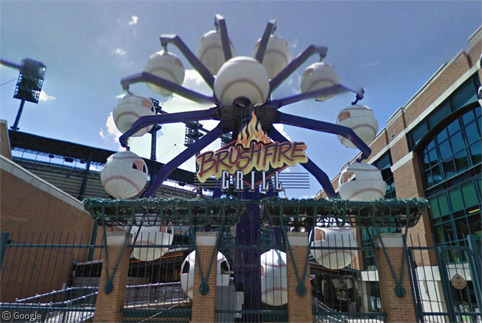
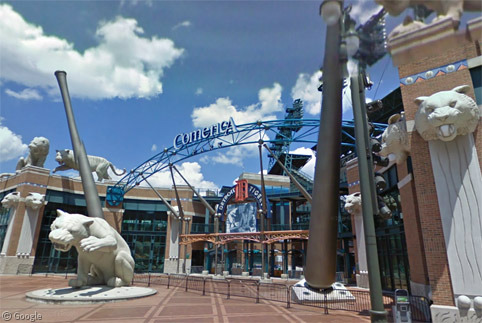
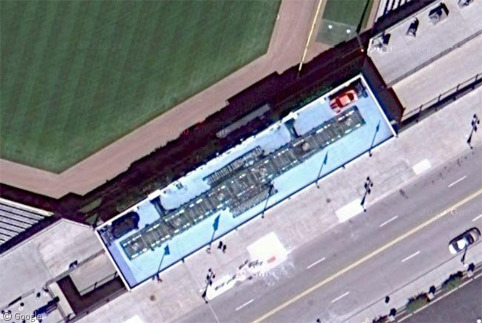
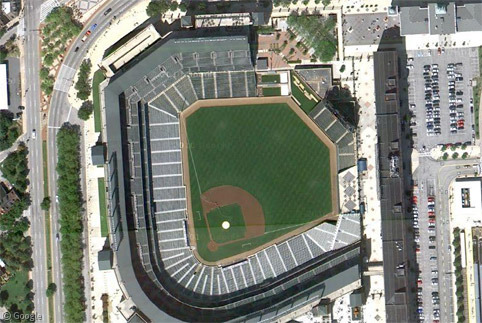
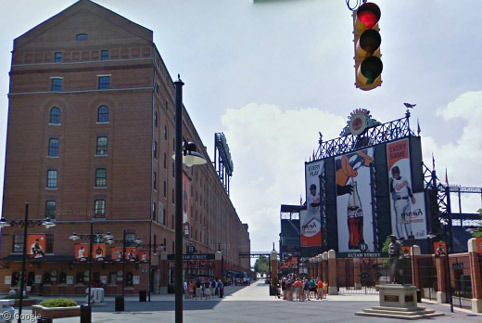
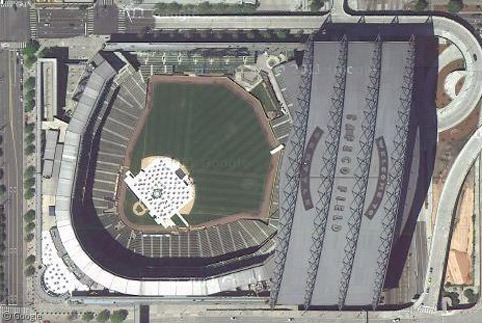
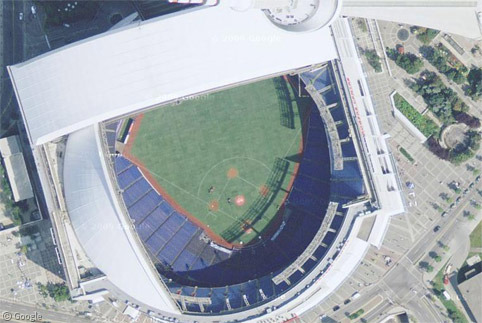
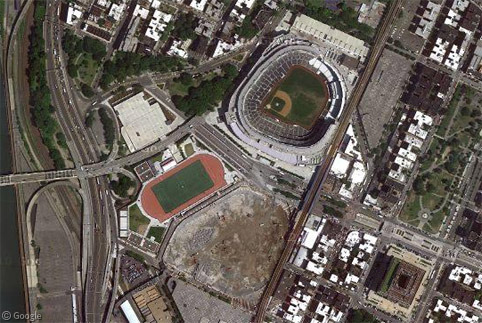
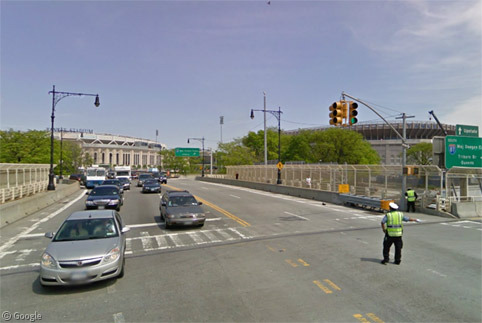
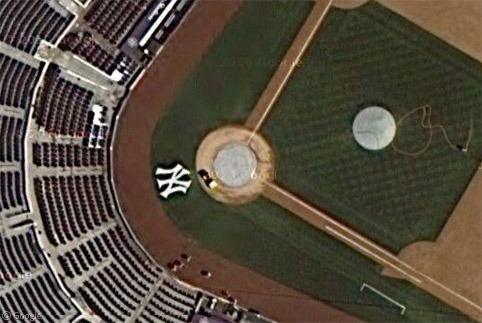
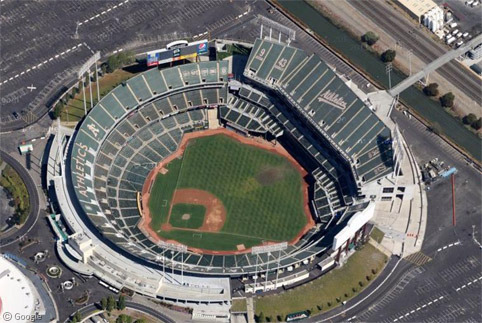
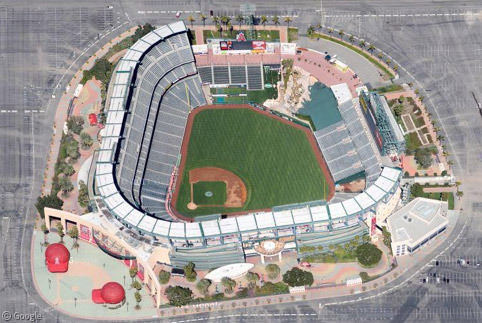
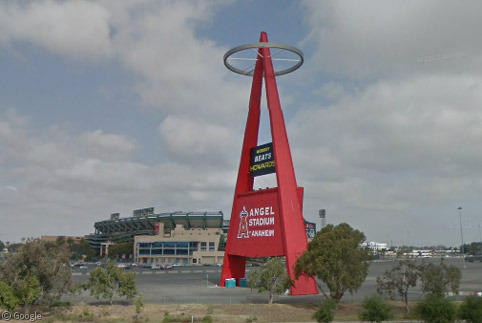
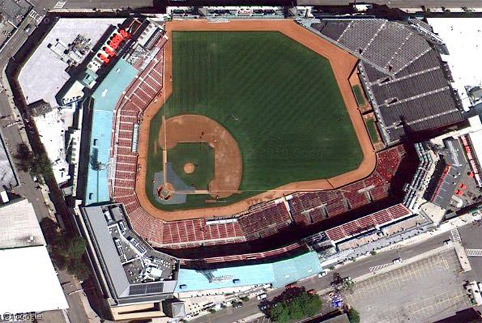
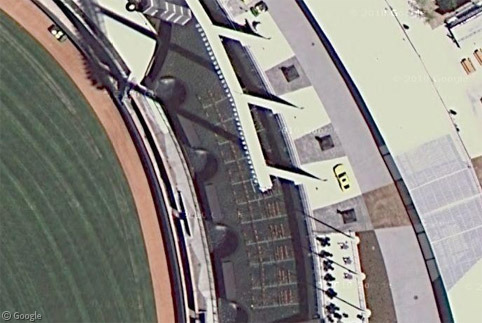
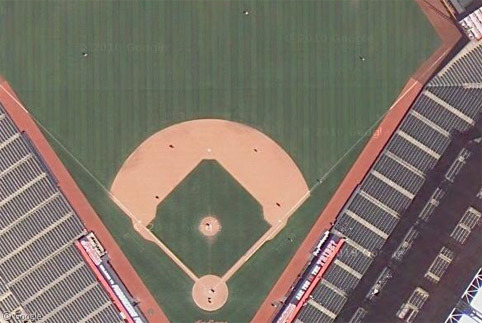
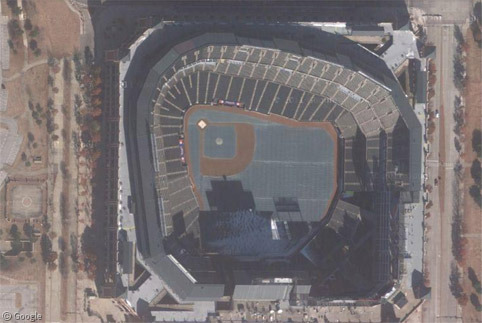
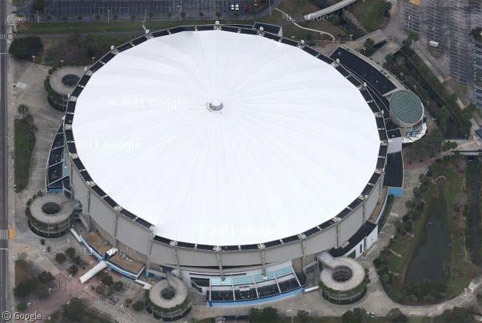
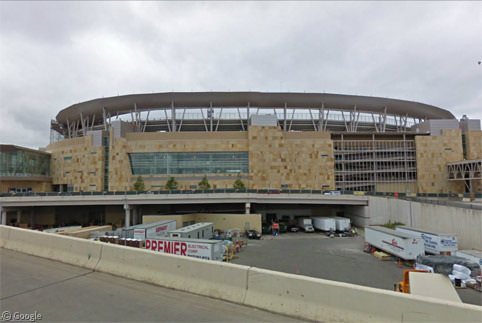
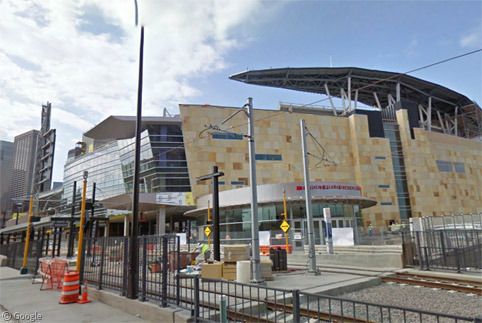
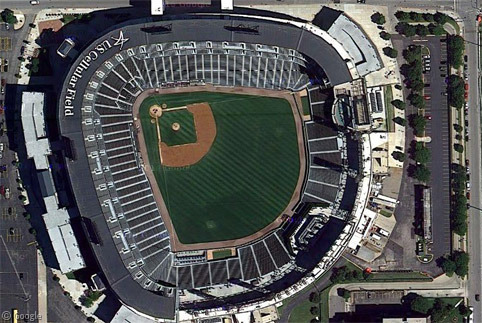
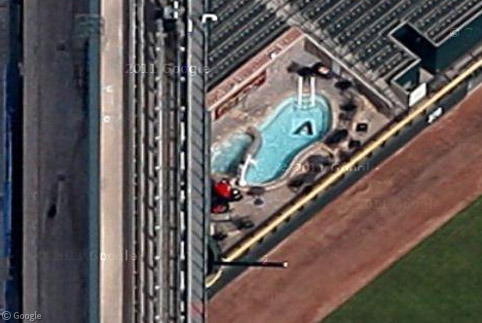
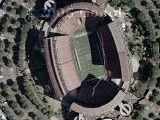
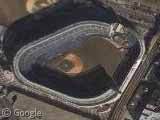
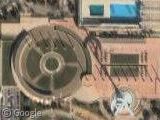
If you view Angel Stadium looking south, you can see that on the day that particular image was taken the stadium was being used for a very different purpose!
http://bit.ly/rkMY2n
Houston plays in the National League
The Astros aren’t in the American League yet… though there are some who want them to move.
Sorry Texas baseball fans… I really do apologise for placing your teams in the wrong leagues.
I’ve edited the post to include Rangers Stadium (is that really snow on the field in the shadow of the scoreboard??) and will make sure the Astros appear in the follow-up National League post.